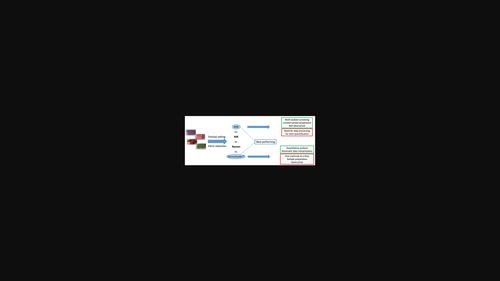当前位置:
X-MOL 学术
›
Drug Test. Anal.
›
论文详情
Our official English website, www.x-mol.net, welcomes your feedback! (Note: you will need to create a separate account there.)
Evaluation of an electrochemical sensor and comparison with spectroscopic approaches as used today in practice for harm reduction in a festival setting—A case study: Analysis of 3,4-methylenedioxymethamphetamine samples
Drug Testing and Analysis ( IF 2.9 ) Pub Date : 2023-12-12 , DOI: 10.1002/dta.3625 Eric Deconinck 1, 2 , Marie A. Polet 1 , Michaël Canfyn 1 , Céline Duchateau 1, 2 , Kris De Braekeleer 2 , Robin Van Echelpoel 3, 4 , Karolien De Wael 3, 4 , Lies Gremeaux 5 , Maarten Degreef 5 , Margot Balcaen 5
Drug Testing and Analysis ( IF 2.9 ) Pub Date : 2023-12-12 , DOI: 10.1002/dta.3625 Eric Deconinck 1, 2 , Marie A. Polet 1 , Michaël Canfyn 1 , Céline Duchateau 1, 2 , Kris De Braekeleer 2 , Robin Van Echelpoel 3, 4 , Karolien De Wael 3, 4 , Lies Gremeaux 5 , Maarten Degreef 5 , Margot Balcaen 5
Affiliation

|
More and more countries and organisations emphasise the value of harm reduction measures in the context of illicit drug use and abuse. One of these measures is drug checking, a preventive action that can represent a quick win by tailored consultation on the risks of substance use upon analytical screening of a submitted sample. Unlike drop-in centres that operate within a fixed setting, enabling drug checking in a harm reduction context at events requires portable, easy to use analytical approaches, operated by personnel with limited knowledge of analytical chemistry. In this case study, four different approaches were compared for the characterisation of 3,4-methylenedioxymethamphetamine samples and this in the way the approaches would be applied today in an event context. The four approaches are mid-infrared (MIR), near-infrared, and Raman spectroscopy, which are today used in drug checking context in Belgium, as well as an electrochemical sensor approach initially developed in the context of law enforcement at ports. The MIR and the electrochemical approach came out best, with the latter allowing for a direct straightforward analysis of the percentage 3,4-methylenedioxymethamphetamine (as base equivalent) in the samples. However, MIR has the advantage that, in a broader drug checking context, it allows to screen for several molecules and so is able to identify unexpected active components or at least the group to which such components belong. The latter is also an important advantage in the context of the growing emergence of new psychotropic substances.
中文翻译:

电化学传感器的评估以及与目前在节日环境中减少危害实践中使用的光谱方法的比较——案例研究:3,4-亚甲二氧基甲基苯丙胺样品的分析
越来越多的国家和组织强调减少非法药物使用和滥用危害措施的价值。其中一项措施是药物检查,这是一种预防措施,通过对提交的样本进行分析筛选,针对药物使用风险进行定制咨询,可以快速取得胜利。与在固定环境中运作的临时中心不同,在活动中在减少伤害的背景下进行药物检查需要便携式、易于使用的分析方法,并由分析化学知识有限的人员操作。在本案例研究中,比较了四种不同的方法来表征 3,4-亚甲二氧基甲基苯丙胺样品,并以这些方法在当今事件背景下的应用方式进行了比较。这四种方法是中红外 (MIR)、近红外和拉曼光谱(目前在比利时的药物检查中使用),以及最初在港口执法中开发的电化学传感器方法。 MIR 和电化学方法效果最好,后者可以直接分析样品中 3,4-亚甲二氧基甲基苯丙胺(作为碱当量)的百分比。然而,MIR 的优点是,在更广泛的药物检查环境中,它可以筛选多个分子,因此能够识别意想不到的活性成分或至少是这些成分所属的组。后者在新型精神药物不断涌现的背景下也是一个重要优势。
更新日期:2023-12-14
中文翻译:

电化学传感器的评估以及与目前在节日环境中减少危害实践中使用的光谱方法的比较——案例研究:3,4-亚甲二氧基甲基苯丙胺样品的分析
越来越多的国家和组织强调减少非法药物使用和滥用危害措施的价值。其中一项措施是药物检查,这是一种预防措施,通过对提交的样本进行分析筛选,针对药物使用风险进行定制咨询,可以快速取得胜利。与在固定环境中运作的临时中心不同,在活动中在减少伤害的背景下进行药物检查需要便携式、易于使用的分析方法,并由分析化学知识有限的人员操作。在本案例研究中,比较了四种不同的方法来表征 3,4-亚甲二氧基甲基苯丙胺样品,并以这些方法在当今事件背景下的应用方式进行了比较。这四种方法是中红外 (MIR)、近红外和拉曼光谱(目前在比利时的药物检查中使用),以及最初在港口执法中开发的电化学传感器方法。 MIR 和电化学方法效果最好,后者可以直接分析样品中 3,4-亚甲二氧基甲基苯丙胺(作为碱当量)的百分比。然而,MIR 的优点是,在更广泛的药物检查环境中,它可以筛选多个分子,因此能够识别意想不到的活性成分或至少是这些成分所属的组。后者在新型精神药物不断涌现的背景下也是一个重要优势。



























 京公网安备 11010802027423号
京公网安备 11010802027423号